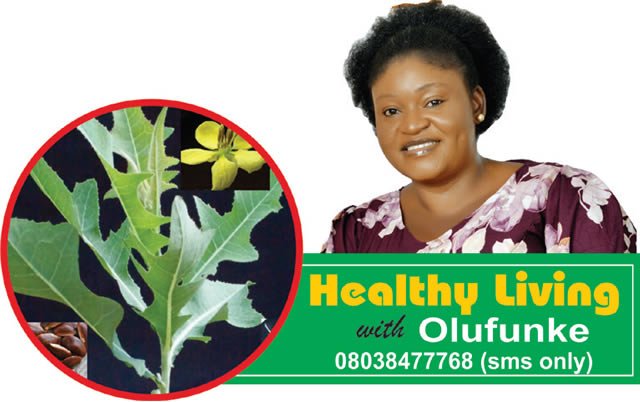
Cucurbita pepo, also known as elegede or agbeje, in Yoruba is the pumpkin I discussed last week not Telfairia occidentalis (Ugu). I got lots of questions on this and I hope this makes it clear now. I made soybeans powder and I will like to share the recipe with you. I boiled some soybeans and I removed the peels. I kept the peeled seeds in an air-tight container and I put in a dark, warm place to ferment for 12 hours. After that, I sun-dried it (it will not dry properly in a day). When it was properly dried, I roasted it and I blended it. You can add to your pap (ogi/akamu), oat and smoothies.
Recently, I got a text from Mr Kayode Babalola, who is an agronomist. He told me he calls me “madam medicine”. I find the nickname funny. He talked extensively about his love for nature. He talked about how he eats pawpaw seeds and how he uses avocado seeds for tea. That is not all, he reminded me of coconut husks fitting into this series and here we are today, my discussion will be on coconut shells and husks. I am always happy with feedbacks like this. A Yoruba adage says ẹni to ba fe pe laye ko ni ba wọn gun igi agbon, meaning that he who desires long life will never venture into coconut tree climbing. Like the adage warns, we will not be climbing the tree; all we need are just the shells and the husks.
When you talk about coconut shells, what comes to mind is that they are useless. It is surprising that the shells of Cocos nucifera (coconut) has medicinal uses, In fact, I stumbled on a research done on its ash and the conclusion is….. No, I will not say it; you have to read it under the scientific studies. I know most readers hate reading that part and this is my own tactic to encourage you to read it. Coconut shell can be used as a raw material for making activated charcoal. The ash can be used as an active ingredient in cosmetics skin care. The activated carbon manufactured from coconut shell is considered superior to those obtained from other sources. On the uses, the first, easiest and simplest idea to consider is simply using half coconut shells as plant pots. You can turn a shell half into a bowl that you can use to collect seeds in your garden. They can also be cleaned up and polished to make a small bowl. It could be used for display purposes to hold dried nuts.
You can eat from them, shallow coconut shell bowl can also make a good soap dish, you can use them to make a simple candle holder. In countries where coconuts are common, it is not unusual to see householders using coconut shell halves attached to sticks of some kind as simple but effective ladles. They can be composted but they will take a lot longer than most other materials to break down. You can turn small pieces of shells into some jewellery for yourself or potentially to give away as lovely home-made gifts.
Let me talk about the husk now. The fibres from coconut husks, which are known as coir, are versatile and can be used in a variety of products. They are used as a planting medium that helps plant retain moisture and resist fungal growth. Coir is used to make home accessories like carpets, doormats, brushes and twine. It is even a component in mattresses and floor tiles. In addition to being stronger and stiffer than synthetic plastic fibers, this material is lighter and offers better performance which can lead to cost savings for companies. One of the common traditional practices identified is the use of the husk as herbal ‘chewing sticks’ for daily cleaning of teeth. It is used for setting fire for preparing food; in fact, it can replace wood. In villages and several rural areas, they are burnt at homes just before bedtime to shoo mosquitoes and other insects away. Because it does not give off undesirable smoke or fumes, it is completely safe and harmless. It is a good source of bio fuel, similar to charcoal. It can give a growth boost to plants and help them absorb nutrition more effectively.
A study on the husk tea shows it has significant hypoglycemic and anti-diabetic effects in alloxan-induced diabetes. In fact, the effect is comparable to that of the combination of Daonil and Metformin, which are blood sugar-lowering medications.
Scientific studies
1:In a study titled, Antimicrobial Properties of Cocos nucifera (coconut) husk: An extrapolation to oral health by Jose et al., C. nucifera has significant inhibitory action against oral pathogens, indicating the presence of highly effective active compounds, which can be identified and incorporated into modern oral care systems for controlling various diseases.
2: A study titled, Anti-malarial Activity of Cocos nucifera Husk Fibre: Further Studies by Adebayo et al., shows that the husk fibre of the West African tall variety of Cocos nucifera is a potential source for novel anti-malarial drug.
In a study titled, ANTI-DIABETIC EFFECTS OF THE COCOS NUCIFERA (COCONUT) HUSK EXTRACT by Victor Emojevwe, the conclusion is that Cocos nucifera husk tea has a significant hypoglycemic and anti-diabetic effects in alloxan-induced diabetes. This effect is comparable to that of the combination of Daonil and Metformine and could serve as an effective adjunct in the management of diabetes mellitus.
4: In a study titled, Synthesis and Structural Properties of Coconut Husk as Potential Silica Source, by
Anuara et al., the conclusion is that coconut husk ash would be a promising alternative source of silica to reduce cost of production as it shows high purity of silica.
5: In a study titled, Antifungal Potential and Antioxidant Efficacy in the Shell Extract of Cocos nucifera (L.) (Arecaceae) against Pathogenic Dermal Mycosis by Thebo et al., the study provides useful data concerning the different medicinal properties in coconut shells for protecting humans against common skin diseases. Coconut shells can, therefore, be regarded as a promising candidate with high therapeutic potential for drug preparation.
6: In a study titled, Coconut Shell Ash as a Mild Agonist of Reproductive Organ Development and Sex Hormone Release in Growing Rabbits by Iwu et al., the results showed that coconut shell ash supplementation could improve the weight of testis. It also showed that CSA supplementation would support better testicular development of rabbits. This was associated with increasing serum testosterone concentration indicating probably a CSA inducement of improved metabolic activity. The study also showed that CSA supplementation rate in female rabbits led to improved weight of whole reproductive tract, weight of ovary, weight of oviduct and uterine weight. This was equally associated with increased estrogen concentration which, increased with increasing CSA supplementation.
Boil some water, pour on washed coconut husk to make tea. You can also see the great impact coconut shell ash has on the reproductive organs of the animals in scientific study number six. On this note, I will recommend it as a good source of activated charcoal.
Copyright PUNCH.
All rights reserved. This material, and other digital content on this website, may not be reproduced, published, broadcast, rewritten or redistributed in whole or in part without prior express written permission from PUNCH.
Contact: [email protected]










